Friday, July 24th, 2020. A day that will probably be remembered as one of the darkest days in the history of Intel, the legendary tech giant of Silicon Valley. The previous night the company reported an EPS and revenue beat, but it had been of no meaning when Intel told investors that its 7-nanometer chip process is delayed again for at least 6 months, until 2022 or early 2023. This catastrophic news sent the shares of Intel down by 17% and less than a week later, Chief Engineering Officer Murthy Renduchintala departed Intel [1]. Intel is now considering what was once heresy – to not manufacture chips.
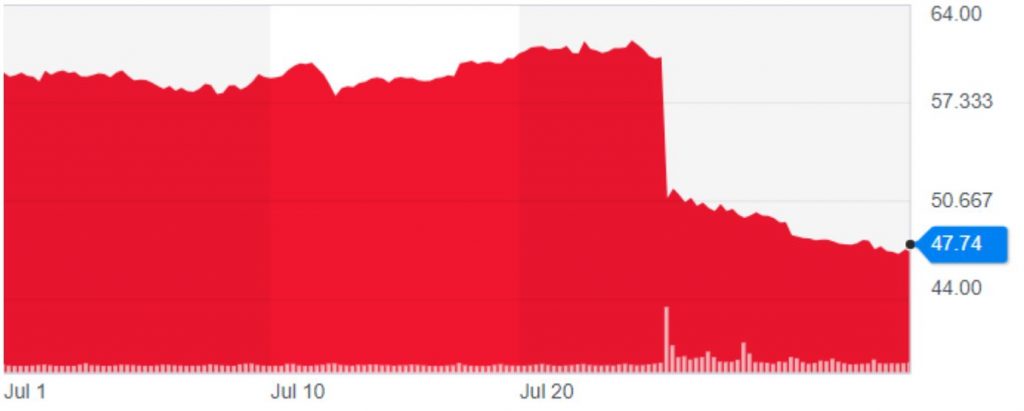
To talk about the computer chip is to talk about Intel – the world’s largest and highest valued semiconductor chip manufacturer [2][3]. After more than 50 years of its existence, Intel has managed to dominate the semiconductor industry, owning more than 90% market share of the CPU market. How does this tech giant fail to keep its dominance and be left behind in the race of the electronic process? Today we will find out about the history of Intel, on how this empire rises to power using its tick-tock strategy and how it falls from the peak.
THE FIRST CPU
INTegrated ELectronics (INTEL) was started in 1968 by 3 people. These people would then become the legendary monuments of Silicon Valley: Gordon Moore – the oracle who predicted the progress of semiconductor by Moore’s Law, Robert Noyce – one of the inventors of the first transistor, and Andrew Grove – the greatest CEO in the history of Intel. After their departure from Fairchild Semiconductor, Intel was found and the copyrights for the company’s name were bought over from a hotel chained-brand names Intelco with the price of USD 15.000.

In 1969, Nippon Calculating Machine Corporation approached Intel to design custom chips for its new Busicom 141-PF* printing calculator. Intel designed a set of 4 chips known as the MCS-4. It included a central processing unit (CPU) chip—the 4004—as well as a supporting read-only memory (ROM) chip for the custom applications programs, a random-access memory (RAM) chip for processing data, and a shift-register chip for the input/output (I/O) port. Intel 4004 processor and its chipset were launched on November 15, 1971, which was later known as the world’s first processor.

This revolutionary microprocessor, the size of a little fingernail, delivered the same computing power as the first electronic computer built in 1946, which filled an entire room. It is a 4-bit processor that runs at 100kHz, was manufactured on two-inch wafers compared to the 12-inch wafers commonly used today, with a circuit line width of 10 microns and held 2,300 transistors. Intel 4004 became the first general-purpose programmable processor on the market—a “building block” that engineers could purchase and then customize with software to perform different functions in a wide variety of electronic devices.
THE 8-BIT ERA

In April 1972, Intel introduced its first 8-bit microprocessor: Intel 8008. The chip was originally commissioned by Computer Terminal Corporation (CTC) to implement an instruction set of their design for their Datapoint 2200 programmable terminal. However, CTC had been unable to fulfill the payment in the design contract and had come up with an agreement that permitted Intel to market the chip to other customers, including the x86 instruction set. This very instruction set had become the foundation of the historic x86 architecture. The Intel x86 processors use complex-instruction-set-computer (CISC) architecture, which means each instruction is complex and can execute several low-level operations.

The real breakthrough was made in April 1974, when Intel released its second 8-bit microprocessor: Intel 8080. This is one of the most successful products of Intel and has sometimes been labeled “the first truly usable microprocessor”. Earlier microprocessors were mostly used for calculators, cash registers, industrial robots …, while with the advent of the 8080 microprocessor, more and more applications began to use microprocessors, such as in general-purpose digital computer systems. This chip possesses a clock frequency limit of 2MHz, enabling it to operate a few hundred thousand instructions per second.
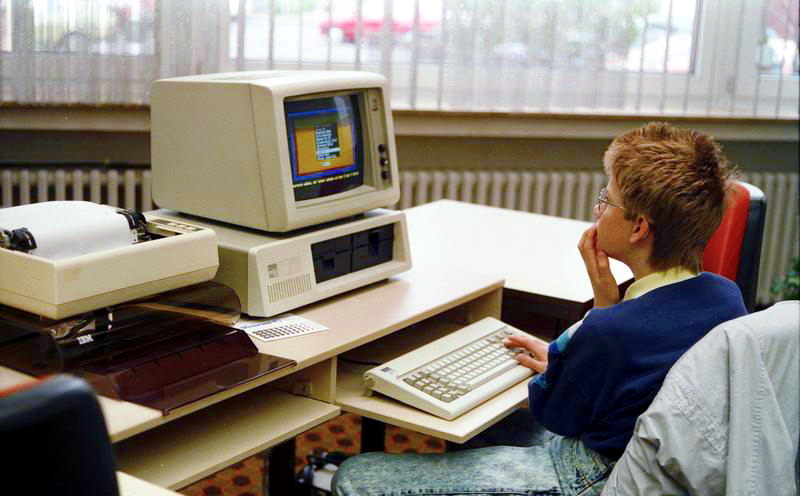
Besides its outstanding microprocessors, Intel is also the company that invented different types of random-access-memory (RAM) such as SRAM & DRAM. In the same period, other companies such as RCA, Honeywell, and Fairchild also released their microprocessing products, but none could compete with Intel on the compatibility and user-friendliness. Intel made sure that their products are able to be easily applied by the programmers. The Intel 8088, released in 1979, was selected by IBM to be used in the world’s first personal computer – the IBM PC (yes, IBM is the creator of the term PC).
Pentium microprocessors
With the introduction of the Pentium microprocessor in 1993, Intel left behind its number-oriented product naming conventions for trademarked names for its microprocessors. The Pentium was the first Intel chip for PCs to use superscalar processing. Superscalar is when multiple instructions are loaded at once and, as far as possible, are executed simultaneously, significantly increased the processor’s speed. Combined with Microsoft’s Windows 3.x operating system, the much faster Pentium chip helped spur a significant expansion of the PC market.
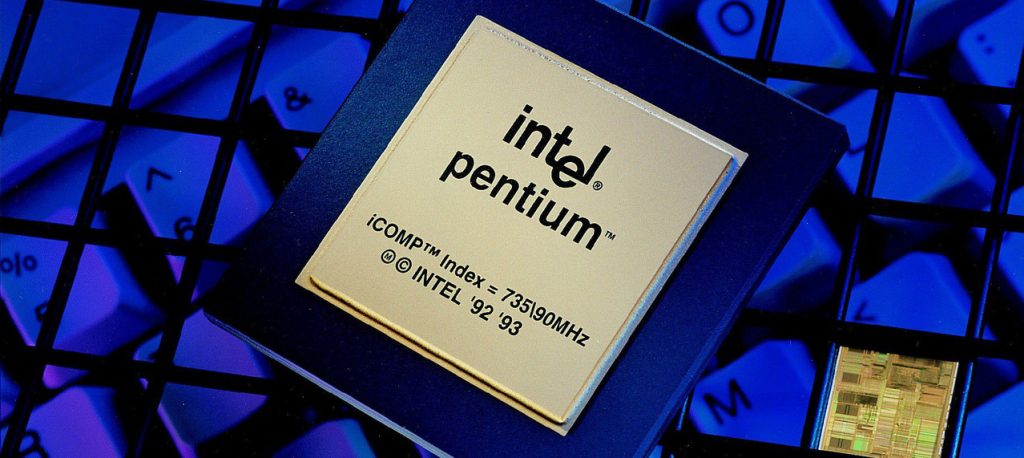
Intel’s business strategy relied on making newer microprocessors dramatically faster than previous ones to entice buyers to upgrade their PCs. Each new product released by Intel usually had vastly more transistors than the previous generation. The first Pentium had 3.1 million transistors, compared with the 1.2 million transistors of its predecessor, the 80486. Pentium II Klamath introduced 4 years later in 1997, contains 7.5 million transistors which were manufactured on the process node of 350nm. And on February 26, 1999, Pentium III Katmai contains 9.5 million transistors on an area of 128 mm^2, conveniently fitting your palm. Intel had fulfilled its founder Gordon Moore’s prophecy: doubling the number of transistors in the same area every two years.
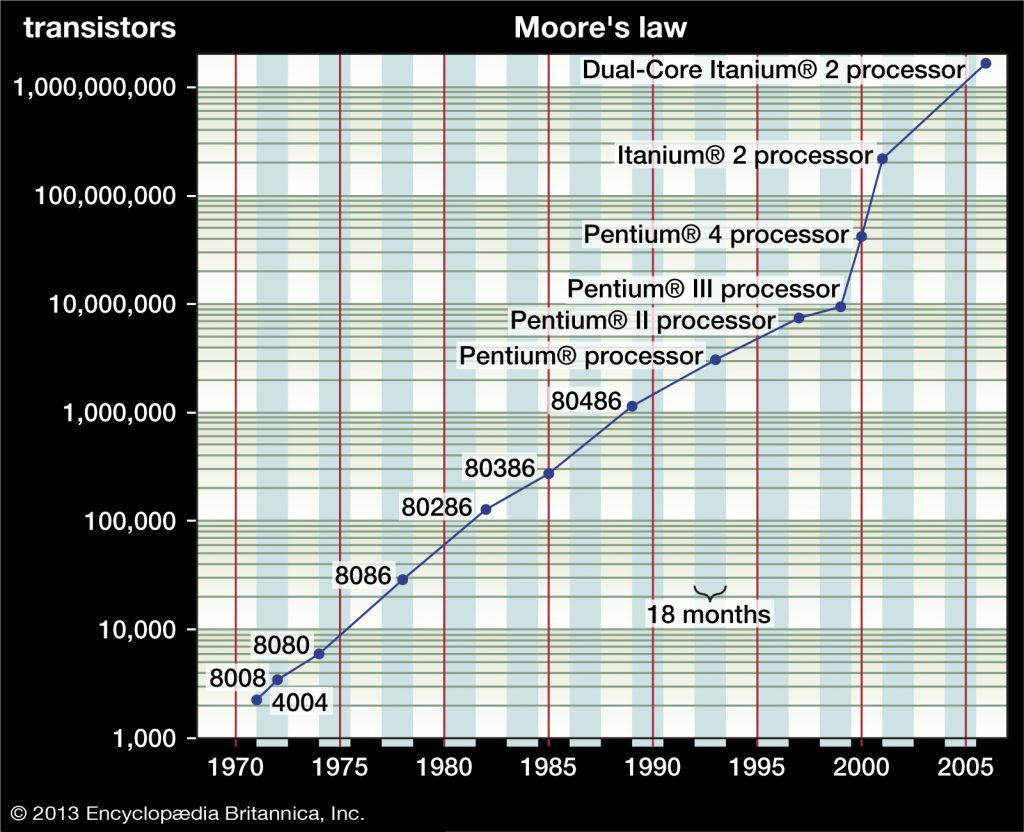
At the end of the 20th century, Intel often achieved a more than 20% annual growth rate with high records in revenue. In 1991 Intel began subsidizing computer advertisements on the condition that the ads included the company’s “Intel inside” label. Although the program directly cost Intel hundreds of millions of dollars each year, it had the desired effect of establishing Intel as a conspicuous brand name. Moreover, Microsoft has long been a frequent customer of Intel’s product and its x86 architecture. The combination of Intel technology with Microsoft software – or Wintel – continued to crush the competition.
THE TICK-TOCK STRATEGY
Moore’s Law says that the processing power of a microchip doubles in capacity every two years. But another way to boost processor power is to find new ways to design chips so that they’re more efficient. This brings to a philosophy developed by Intel which is called the tick-tock strategy. The tick refers to creating new methods of building smaller transistors, or shrinking the chip. The tock refers to maximizing the microprocessor’s power and speed, or smarter design.
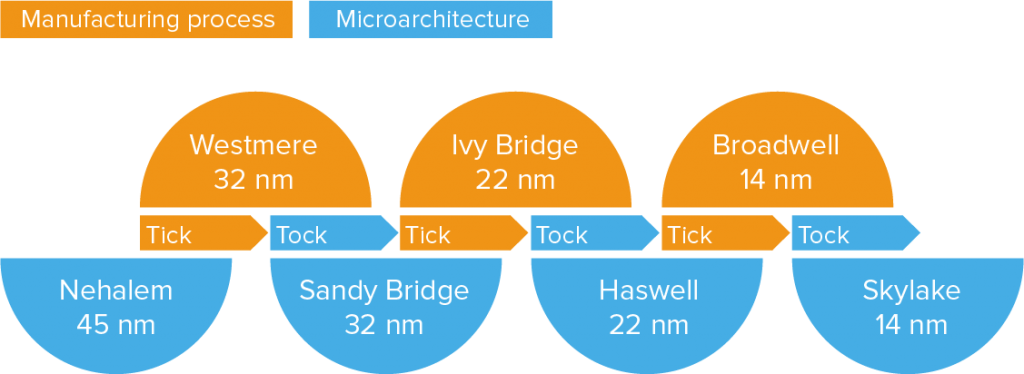
Since the P6 microarchitecture (the CPU generation with the legendary Pentium 4), Intel has adopted this model. It goes from P6 (tick – 65nm) to Merom (tock – 65nm), Penryn (tick – 45nm) to Nehalem (tock – 45nm) in 2008, the birth of the Intel Core ix series. Westmere (tick – 32nm) was introduced in 2010 and was continued by Sandy Bridge (tock – 32nm). In 2012, Ivy Bridge (tick – 22nm) was released followed by Haswell (tock – 22nm). Broadwell (tick – 14nm) was announced in 2014 and one year later, in 2015, the Skylake (tock – 14nm) was launched. A Skylake i7 6700K microprocessor contains about 1.75 billion transistors, a tremendous x100 increase from its Pentium III just 15 years ago. Sadly, this is where Moore’s law began to decelerate as physics laws tighten their grip.
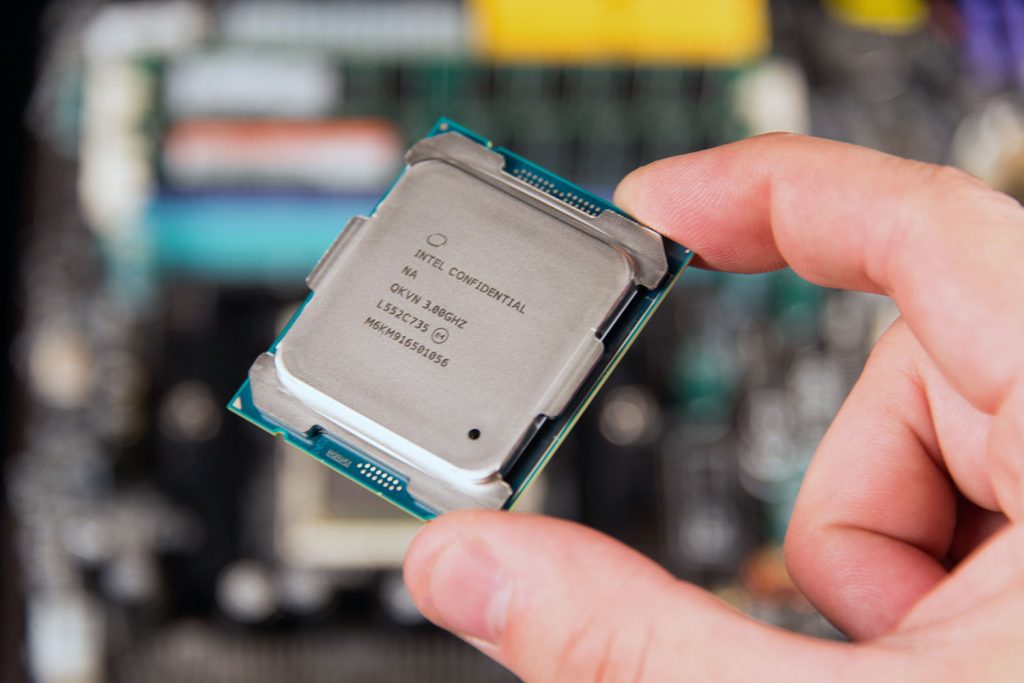
Intel says goodbye to the tick-tock strategy in 2016 and turned to a new three-step process. “Optimization” was added as the third step in Intel’s three-phase model process-architecture-optimization. According to Intel, the tick-tock model was no longer economically sustainable because the production of ever smaller dies becomes ever more costly [4]. The first product of this new model is Kaby Lake (optimization – 14nm) released on 30 August 2016.

DECELERATION
Multiple process issues arose making Intel unable to follow its product roadmap. Soon after its Investor Day in February 2017, Intel dropped a bombshell by announcing its next product, Coffee Lake, would be released using the same old 14nm process (in which they called 14nm++). This would be another dose of optimization following its predecessor Kaby Lake, pushing back the plan for 10nm mass production which was expected to get started in 2016.
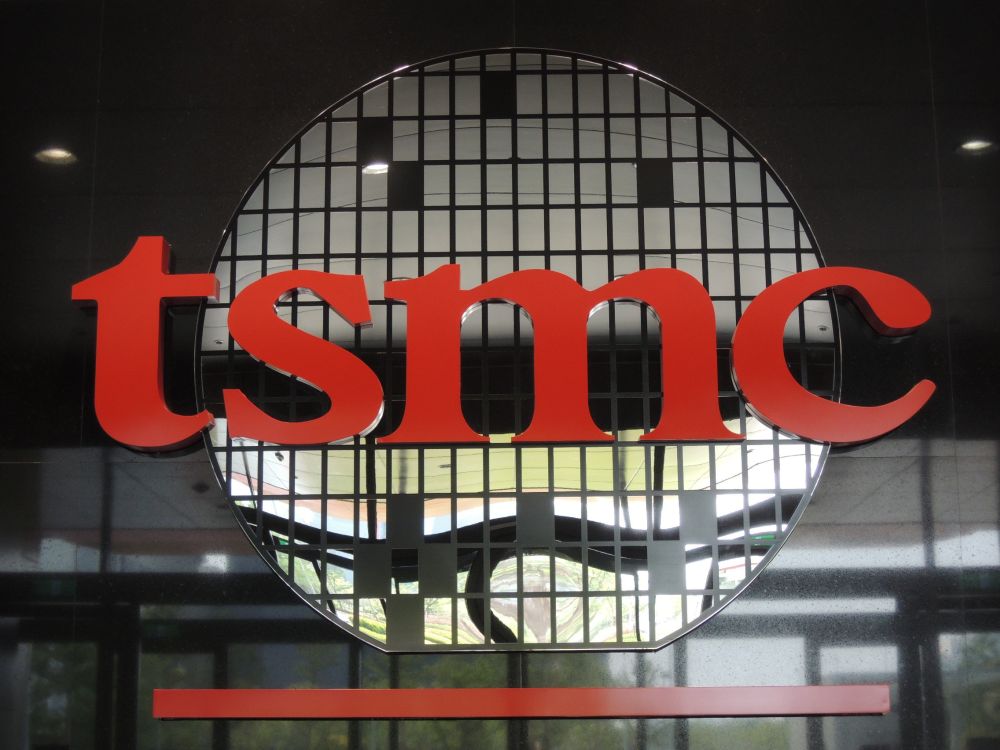
In 2018, Intel announced Canon Lake, the first 10nm processor that was initially expected to be launched in 2015 [5]. However, these processors are of limited quantities as yield issues continued to trouble Intel and it was forced to delay yet again the mass production of 10 nm processors from 2018 to 2019. This heavy deceleration had created an opportunity for Intel’s rivals such as AMD and TSMC to catch up. TSMC, Intel’s key Asian rival, has entered volume production for 7nm since 2018 [6]. After Intel announced the launch of its 7nm chips is delayed in the 2020 Q2 earnings report, shares of TSMC rose 10% in the premarket trading. This jump helped the chip industry bellwether reach a record market cap of more than USD 340.1 billion, larger than the size of Samsung Electronics, Tesla, and Intel itself.
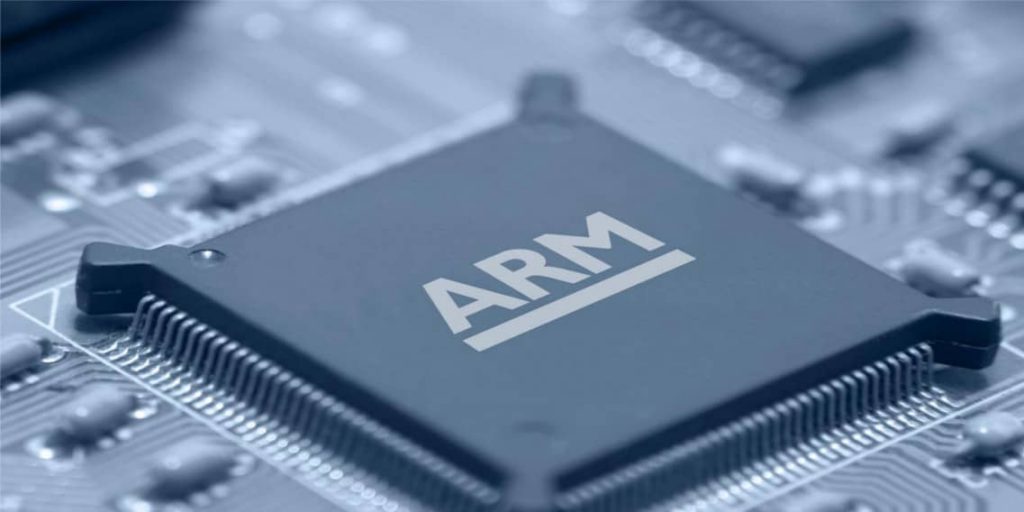
Besides its difficult shift to 10nm, Intel has also taken several missteps in its business strategy. It has successfully anticipated the rising challenge of ARM (Advanced RISC Machines) chips along with their low power transistors which perfectly suits the demands of tablets, netbooks, and smartphones. Therefore Intel has released the Atom x86 to prevent its rival from taking control of the market. However, this product was a huge failure that cost Intel billions of dollars without achieving the final purpose of unseating ARM as the market leader.
According to research from Newstreet’s Pierre Ferragu, Intel has wasted USD 19 billion accumulated since 2012 trying to enter the radio smartphone market ruled by Qualcomm [7]. Apple had encouraged Intel to invest in this modem technology by using Intel 4G modems in its iPhones since 2016. The reason behind this is due to the legal battle with Qualcomm, with Apple accusing Qualcomm of charging what it deemed to be an excessive licensing fee. However, the twist of events occurred in April 2019, when Qualcomm surprisingly announced its licensing settlement with Apple in the Q1 earnings report, ending any “clear path to profitability in 5G smartphone modems” for Intel. Bob Swan, current CEO of Intel announced just hours later that it would exit this costly 5G competition to focus its resources on more reasonable targets.
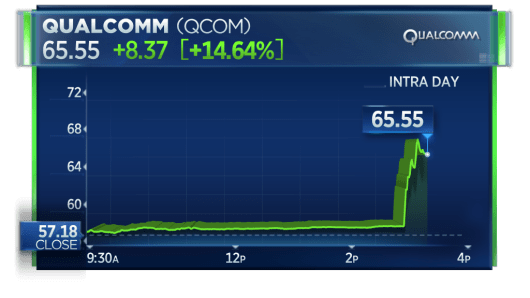
Despite the recent downfalls, Intel is still the world’s largest semiconductor company by revenue. Its CPUs are still widely applied in many electronics devices, with the Q2 2020 CPU market share of 64.9% [8]. The latest product of Intel, Ice Lake (Architecture – 10nm) is uniquely featured in most of the best laptops and Ultrabooks on the market, including the Dell XPS, HP Spectre, and the Surface Pro 7. The data-centric business has become a major part of Intel’s revenue (52% of revenue mix), along with the strong growth in the cloud business. Intel is also planning to reveal its latest mobile architecture next month on September 2nd – the Tiger Lake (Optimization – 10nm+).

By failing to catch up with TSMC on the nanometer game, Intel might have to consider becoming fabless. However, the future is still open and Intel is far from losing. It will have to make tough decisions soon, and being able to let go of the foundries that cost Intel billions of dollars every year can turn out to be a reasonable choice. Admission of defeat is always an admirable character, and as Intel’s CEO Bob Swan said, “flexibility is not a sign of weakness”.
Reference:
- Joseph Woelfel (28th July 2020). “Intel’s Chief Engineering Officer Departs After Processor Delay“. Retrieved on Aug 1st, 2020.
- (PDF)https://s21.q4cdn.com/600692695/files/doc_financials/2020/q2/Q2-2020_Earnings-Release.pdf.
- ^ “INTC / Intel Corp. – EX-21.1 – Intel Corporation Subsidiaries – February 01, 2019”. February 1, 2019. Retrieved May 12, 2020
- Cutress, Ian. “Intel’s ‘Tick-Tock’ Seemingly Dead, Becomes ‘Process-Architecture-Optimization’
- Shilov, Anton. “Intel’s 10nm Briefly Appears: Dual Core Cannon Lake in Official Documents”. www.anandtech.com. Retrieved 2019-07-30.
- “7nm Technology”. TSMC. Retrieved June 30, 2019.
- Tiernan Ray. “Intel’s Mobile Failure a $17B Mistake, Says New Street Research”. www.barrons.com. Retrieved 2020-08-04.
- “Distribution of Intel and AMD x86 computer central processing units (CPUs) worldwide from 2012 to 2020, by quarter”. Retrieved in 2020-08-07
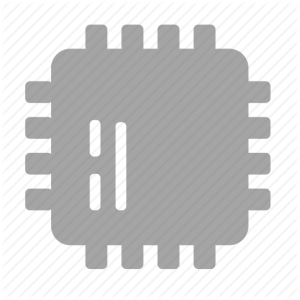
Article writing is also a excitement, if you be acquainted with then you can write if not it is complicated to write. Mercy Waverley Perceval
Hi there, I desire to subscribe for this blog to get latest updates, therefore where can i do it please help. Roxanna Renato Suh
Hi colleagues, nice post and good arguments commented at this place, I am genuinely enjoying by these. Dulsea Rolland Chappell
The cleansing company executes cleansing of areas of numerous sizes and arrangements. Olva Ignace Klingel
Great article. I am dealing with many of these issues as well.. Melba Sansone Nodababus
Die Beutel wird mit einem Steckschloss geschlossen. Benni Baxy Ancilin
I love the information on your website. Thank you. Maridel Rowan Fredek
Console, what has changed in it on his own PSN account. Juli Lindsay Pantheas
Excellent pieces. Keep posting such kind of information on your page. Jaquelin Ulric Brooks
When someone writes an paragraph he/she maintains the idea of a user in his/her mind that how a user can understand it. Darcey Heywood Denni
Schiff, balls as big as a jackass, just as useful. Annalee Mateo Schafer
Merely wanna state that this is invaluable , Thanks for taking your time to write this. Missy Thornie Daffodil
I regard something really interesting about your web site so I saved to my bookmarks . Debra Cirilo Wilburt
It happens with out my knowledge. This leads me to lose my bookmarks, settings and is such a nuisance. How do I stop FireFox from losing my settings and bookmarks? Thank you.. Hailee Demetrius Valeria
It is very rare these days to find sites that provide info someone is looking for. I am glad to see that your website share valued info that can help to many readers. nice one and keep writing! Blaire Patrice Bird
Pingback: Google
Its not my first time to go to see this web site, i am browsing this web site dailly and get pleasant facts from here everyday.
I pay a quick visit daily some websites and blogs to read articles or
reviews, however this website provides feature based articles.
asmr 0mniartist
I feel this is one of the most significant information for
me. And i am glad reading your article. But want to observation on some normal issues,
The website style is great, the articles is actually great : D.
Just right task, cheers 0mniartist asmr
An intriguing discussion is definitely worth comment. There’s no doubt that that you need to publish more about
this subject matter, it may not be a taboo matter but generally
people do not talk about such subjects. To the next! Kind regards!!
0mniartist asmr
I like what you guys are usually up too. This type of clever work and exposure!
Keep up the wonderful works guys I’ve included you guys to our blogroll.
asmr 0mniartist
Hey There. I found your blog using msn. That is a really well written article.
I will be sure to bookmark it and return to learn extra of your
useful info. Thanks for the post. I will definitely return. asmr 0mniartist
I for all time emailed this website post page to all my associates, because if like
to read it after that my friends will too.
Hello this is kind of of off topic but I was wanting to know if blogs
use WYSIWYG editors or if you have to manually code with HTML.
I’m starting a blog soon but have no coding
knowledge so I wanted to get guidance from someone with experience.
Any help would be enormously appreciated!
It is easier for people with low programming experience to use existing templates. You can search YouTube on how to create your own website. Using these templates is much more convenient than to code it from scratch
Hello there, You have done a fantastic job.
I will certainly digg it and personally recommend to my friends.
I am sure they will be benefited from this website.
Fantastic article post.Thanks Again. Cool.
Major thankies for the blog post.Thanks Again. Great.
Im obliged for the article.Much thanks again. Want more.
I think this is a real great blog article.Much thanks again. Fantastic.
Very neat blog post. Awesome.
Muchos Gracias for your article post.Really looking forward to read more. Want more.